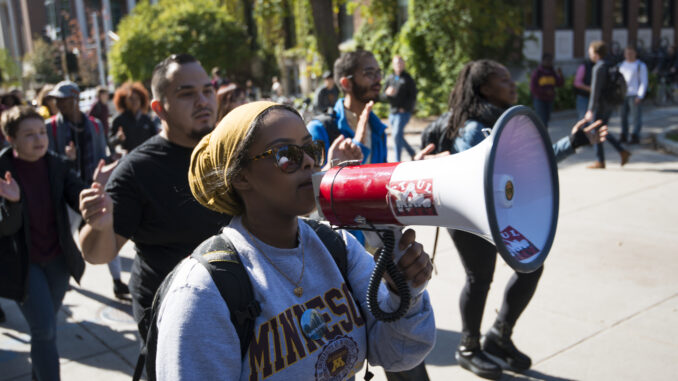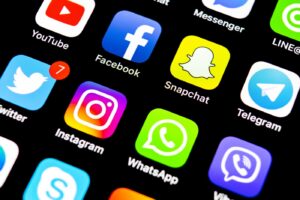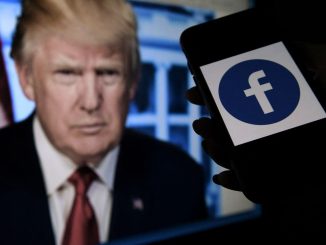

The Internet has enabled the spread of ideas more rapidly and extensively, allowing users to express a wide range of beliefs, including extremist ideas and hate speech. The United Nations (2011) defines hate speech as any types of communication that uses derogatory and discriminatory language attacking individuals on the basis of their skin colour, gender, sexual identity, nationality, etc. With the proliferation of such harmful beliefs and speeches, governments around the world are embroiled in the issue of how to regulate them without infringing upon their citizens’ freedom of expression.
This has been a hot button issue that has sparked the debate among scholars and activists, especially in the West (the US and Western Europe) where freedom of speech is to a large extent still guaranteed by constitutions. The tension among the spread of extremist ideologies, hate speech, and freedom of speech on the Internet has garnered much controversy in Australia as well, which has a rather weak law regulating vilification under the Racial Discrimination Act 1975 (Cth). With this context, this essay will critically examine the pervasiveness of extremist ideas and hate speech on the Internet, and how Australia could learn how to navigate this issue from other countries and Europe’s 2016 Code of Conduct on Countering Illegal Hate Speech Online.
The Pervasiveness of Extremist Ideologies and Hate Speech
- Social Media—A Weapon to Recruit
With the staggering number of 79 official ISIS Twitter accounts on 28th December 2014, with at least 6.500 followers in each of the accounts, terrorist groups like ISIS have successfully used social media as one of the methods to gather new recruits across the globe (Berger & Morgan, 2015). With an average of 11 tweets per day, the group were spreading terror via the Internet, showcasing some of the most gruesome videos of executions through live video features and spreading some propaganda events to recruit like-minded people (Brooking & Singer, 2016).

Facebook: Bird0fJannah / Via This page has been deleted.
A member of ISIS even posted some of her daily lifestyle through social media platform, Facebook. Under the name of BirdofJannah, she used that platform to upload a photo of her daily life as a wife of an ISIS fighter and the life of her husband as an ISIS fighter, from showing how it felt being an ISIS fighter in Syria basically bunch of posts that comomarate her undying love towards his husband and ISIS (Hall, 2014). The purpose of her actions were to recruit young women to join ISIS.

This conjugal context shows that ISIS wanted to create a sense of intimacy, exploiting it as a rhetoric to intrigue young people around the world to join the terrorist group. There were reportedly 100 Australians who fled the country during the peak of ISIS recruitment, deciding to join ISIS, and that were all recruited via social media, like Twitter (Blaker, 2015).
- The Case of Cyberbullies
Cyberbullying refers to an act and/or behaviour that are aggressive by means towards a certain individual or group of people, done repeatedly and over time online, the impact of which is magnified by the invasion of one’s private domain (Nilan, Burgess, & Hobbs, 2015).
A study by O’Dea and Campbell (2012) finds that one third of youths have at least experienced cyberbullying, which could result in social anxiety, emotional distress, psychological trauma, and lack of self-esteem in teenagers.
One of the infamous cyberbullying cases in Australia happened to the face of the iconic hat firm Akubra, Dolly Everett; she took her own life at the age of 14 due to the constant bullying online where foul remarks were sent to her emails (Graham, 2018). The suicide of Dolly Everett proves that hate speech and cyberbullying did nothing but damaging one’s psychological being. This shows how Australia’s legal systems on hate speech and cyber bullying have failed to protect victims of bullying online.
Censorships to Control the Spread of Extremist Ideologies and Hate Speech
Following a terrorist attack that happened in Brussels in March 2016, the European Union Commission worked together with giant tech companies to fight against terrorist propaganda by creating Europe’s 2016 Code of Conduct on Countering Illegal Hate Speech Online in June 2016. Tech companies, like Facebook, Microsoft, Twitter, YouTube, Instagram, Snapchat, Dailymotion, Jeuxvideo.com, and TikTok, announced their commitment to helping the European Union tackle the spread of hate speech by reviewing contents in violation of the conduct that went into their systems. The conduct required these giants to delete violent and illegal content within a 24-hour window; or else, tougher consequences and penalties would be imposed upon them (Delcker, 2020).
In addition to such a code of conduct, there are other mechanisms to regulate and control extremist ideologies and hate speech. By implementing strict censorship, countries like China have, to a certain extent, successfully controlled the circulation of information on the Internet and social media. Fear as a tool to deter the public from accessing illegal information operates in China. Fear-based censorship usually comes with social and legal consequences, such as losing jobs or going to prison, and China is a formidable country that has applied this practice towards its citizens.
Other mechanisms include friction and flooding. The former entails using censorship that taxes or increases other costs like time of accessing or spreading of information deemed dangerous or a threat to the public. The Chinese government forces users to pay money if they want to access certain materials (Roberts, 2018). Friction also diverts the public’s attention by imposing barriers to information access, with some governments even purposely slowing down access to certain webpages, reordering search results, or blocking some sites. Flooding is a method where social media is flooded with information to distract and confuse the public.
Censorships Come at A Price
Social media is a public space for people to exercise their right to express their opinions. The platforms help them communicate and share their thoughts with other people globally. Freedom of expression is a fundamental human right that must be protected in democratic societies. It allows society to grow and develop, and it has been used for a voice of change throughout history. Free speech is not only about our ability to speak but the ability to listen to others and allow other views to be heard. According to the UN Human Rights Committee (2011): “Freedom of expression requires a free, uncensored and unhindered press in which the media can comment on public issues without censorship or restraint and can inform public opinion.”
 By implementing regulations that restrict certain materials or speeches from circulating on social media, governments essentially limit citizens’ freedom of expression. Maintaining the delicate balance between freedom of speech and hate speech is one issue that every democracy is yet to solve.
By implementing regulations that restrict certain materials or speeches from circulating on social media, governments essentially limit citizens’ freedom of expression. Maintaining the delicate balance between freedom of speech and hate speech is one issue that every democracy is yet to solve.
What constitutes hate speech? How can we hold these tech giants accountable as platforms that enable such ideologies and speeches to proliferate? These are questions that need to be addressed before implementing a code of conduct regulating hate speech online.
Looking Ahead
Tech companies complying with Europe’s 2016 Code of Conduct on Countering Illegal Hate Speech Online may be able to control their contents better. When community guidelines are implemented, social media may become a safer place where users can report contents that are in violation of such guidelines. However, implementing just this one policy alone may not be sufficient to stop the spread of dangerous ideologies and hate speech. By just “examining and reporting,” these tech giants are just applying a band-aid solution to a much larger, complex problem. Not only do governments and social media companies need to implement more policies on regulating hate speech, but they also need to spread out the words, both online and online, raising more awareness about the issue and promoting Internet literacy and critical thinking among youths.
The Internet and social media are public spheres where the public can express their train of thoughts and opinions freely and globally. Freedom of expression is a fundamental human right that we are endowed with. However, some can take advantage of this right and spew worldviews that are dangerous and harmful to other people, especially to minority groups. The Australian government could learn from the 2016 EU Code of Conduct on Countering Illegal Hate Speech Online and other countries to enforce limited censorships to minimize the impacts of the spread of extremist ideologies and hate speech online.

References
Berger, J.M and Morgan, J. (2015, March). The ISIS Twitter Census Defining and describing the population of ISIS supporters on Twitter. Retrieved 27 October, 2020, from https://www.brookings.edu/wp-content/uploads/2016/06/isis_twitter_census_berger_morgan.pdf
Blaker, L. (2015). The Islamic State’s use of online social media. Military Cyber Affairs, 1(1), 1-9. doi: 10.5038/2378-0789.1.1.1004
Brooking, E., & Singer, P. (2016). WAR GOES VIRAL. The Atlantic Monthly, 318(4). http://search.proquest.com/docview/1858228044/
Delcker, J. (2020, October 06). Germany’s balancing act: Fighting online hate while protecting free speech. Retrieved October 27, 2020, from https://www.politico.eu/article/germany-hate-speech-internet-netzdg-controversial-legislation/
Graham, B. (2018, May 02). What led to Dolly’s death. Retrieved October 29, 2020, from https://www.news.com.au/lifestyle/real-life/news-life/dolly-everetts-parents-reveal-what-led-to-their-daughters-death/news-story/b7984758aa1ce96def787ad0c20cde93
Hall, E (2014, September 17). “An ISIS Love Story: ‘Till Martyrdom Do Us Part.”. Retrieved 30 October 2020, from www.buzzfeednews.com/article/ellievhall/an-isis-love-story-till-martyrdom-do-us-part.
Massanari, A. (2017). #Gamergate and The Fappening: How Reddit’s algorithm, governance, and culture support toxic technocultures. New Media & Society, 19(3), 329–346. https://doi.org/10.1177/1461444815608807
Nilan, P., Burgess, H., Hobbs, M., Threadgold, S., & Alexander, W. (2015). Youth, Social Media, and Cyberbullying Among Australian Youth: “Sick Friends.” Social Media + Society. https://doi.org/10.1177/2056305115604848
O’Dea, B & Campbell, A. (2012). Online social networking and the experience of cyber-bullying. Studies in health technology and informatics. 181. 212-7. 10.3233/978-1-61499-121-2-212.
Roberts, M. (2018). Censored : distraction and diversion inside China’s great firewall . Princeton University Press.
UN Human Rights Committee. (2011). General Comment No. 34, Article 19, Freedoms of opinion and expression. UN Doc. CCPR/C/GC/34. Retrieved from: http://www2.ohchr.org/english/bodies/hrc/docs/gc34.pdf [Google Scholar]


